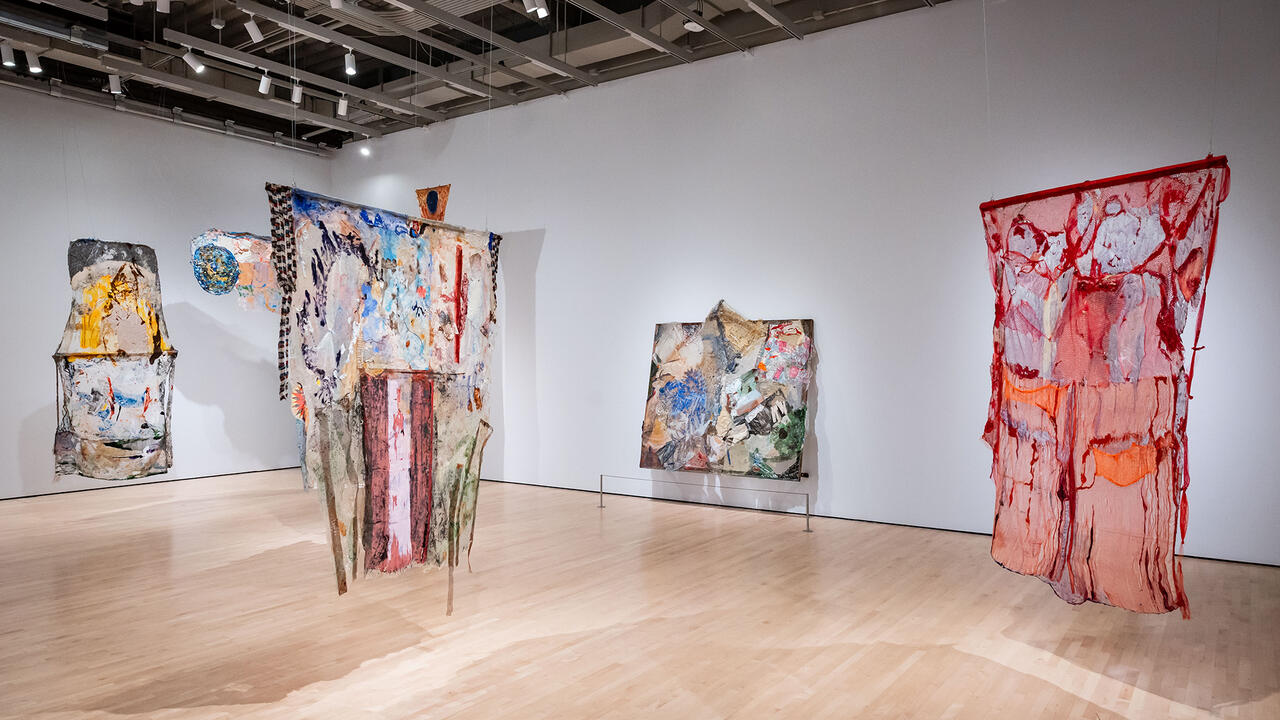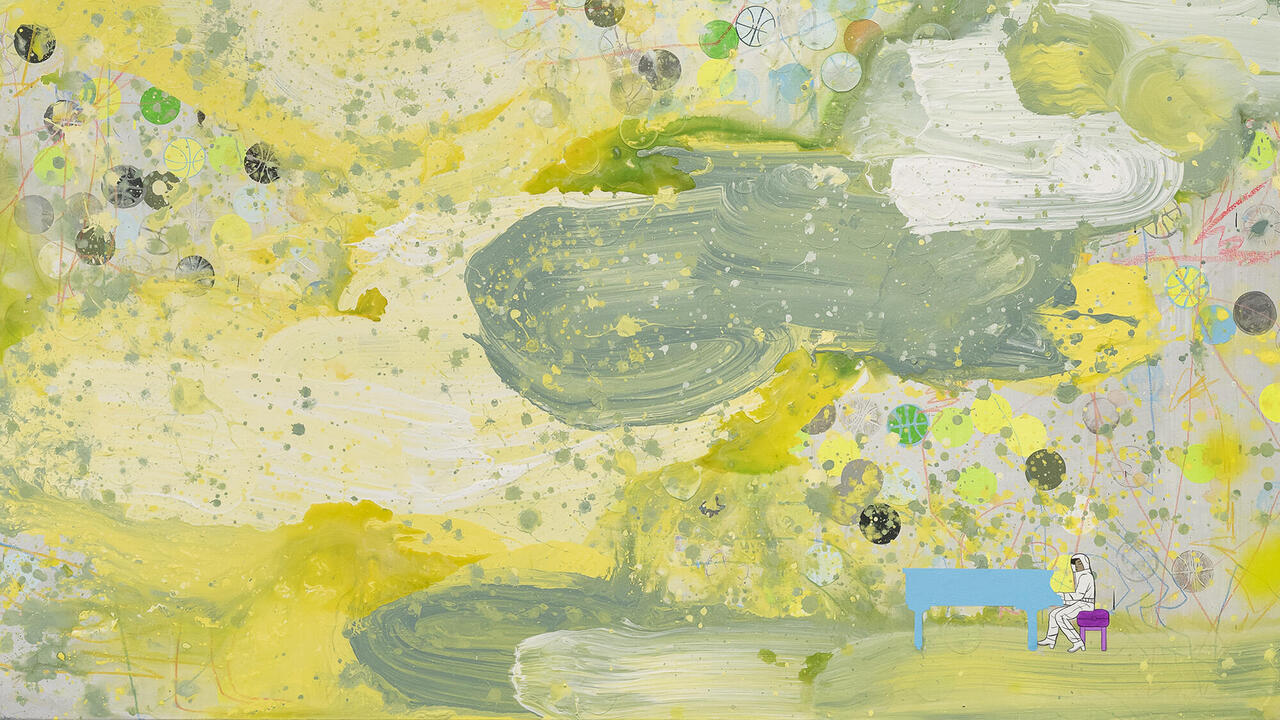The Ocean After Nature
Yerba Buena Center for the Arts, San Francisco, USA
Yerba Buena Center for the Arts, San Francisco, USA

‘Alone over the ocean, I saw it with a different eye,’ reads the opening subtitle in Lithuanian artist Deimantas Narkevic˘ius’s video Revisiting Solaris (2007). The camera pans across the aging face of Donatas Banionis, the star of Andrei Tarkovsky’s 1972 film Solaris, who here reprises his role as scientist Kris Kelvin. The subtitles continue: ‘The motion of the gleaming waves wasn’t at all like the undulation of the sea or the billowing of clouds. It was like the crawling skin of an animal.’

These opening lines express an undercurrent in the exhibition ‘The Ocean After Nature’, at the Yerba Buena Centerfor the Arts, which regards the ocean as a powerful, if underexplored, force in an age of increased migration and environmental degradation. The seas are a natural wonder and a destructive force. Society’s ambivalent attitude toward nature has often been aligned to its unease with people that embody sexual and racial difference – a logic made clear in curator Alaina Claire Feldman’s introductory essay, which is grounded in ecofeminist theory. ‘Like women, throughout history, nature has been represented as otherness to dominant thinking, secondary to industry and the acceleration of capital,’ she writes. ‘Many of our current problems were developed by capitalist patriarchy built on the foundation of governing women, others and nature.’

While Feldman’s stakes are clear-cut, the 21 artists featured in ‘The Ocean After Nature’ frequently opt for more meditative, essayistic approaches to the theme. In Revisiting Solaris, for example, Narkevic˘ius intercuts Banionis’s monologue on the sea with symbolist photographs of a craggy Russian shoreline and ‘behind-the-scenes’ footage, including a scene of himself speaking with the actor. Italian-born Maria Rapicavoli’s Load Displacement (2012) juxtaposes a video of North African immigrants arriving on the shores of Lampedusa with a two-channel slide projection of quotes and statistics, ranging from Marxist theory texts to the GDPs of first-world countries. Each projector advances its own carousel at regular intervals, forcing the viewer to toggle between parallel lines of thought that never seem to intersect – much like nation states in conflict. The similarly evocative soundtrack to Manny Montelibano’s A Dashed State (2015), a roving three-channel video documenting territorial disputes over the West Philippine Sea, includes the sound of a radio tuning between different programme genres and languages.

Other works take a more direct approach to documenting maritime conditions. At Sea (2007), by the recently deceased filmmaker Peter Hutton, follows a container ship’s voyage around the world. Drawing from the tradition of ethnographic film, the work observes the rough labour conditions of the global shipping industry – the underbelly of the Western post-Fordist economy. Hyung S. Kim’s large-scale photographic portraits of Korean female seafood divers or haengyo (Hyun Okran, Onpyeong Jeju, 2014, and Kim Julja, Dodu Jeju, 2013) subvert gender roles by depicting women in a male-dominated industry, while An-My Lê’s series ‘Events Ashore’ (2005–14) series depicts the performance of masculinity in military drills. Does this Soup Taste Ambivalent? (2014) by UNITED BROTHERS (Ei and Tomoo Arakawa) archives a performance at the 2014 Paramount Ranch Art Fair where the artists served soup, prepared by their mother from daikon radishes grown in the Fukushima region of Japan, to an audience paranoid about the possibility of nuclear contamination.

Whilst engaging, ‘The Ocean After Nature’ suffers from its ambitious scale (more than five hours of time-based works are featured as well as a separate screening programme), which prevents viewers from devoting sufficient time to exploring individual pieces. However, the exhibition’s strength is in its framing of the ocean not just as a site of environmental catastrophe, but as a metaphor for all in nature that cannot be tamed. This is best expressed in works that consider the ocean’s affective qualities – as in Renée Green’s film Endless Dreams and Water Between (2009), an epistolary exchange about ‘archipelago mind’ – rather than in a single powerful image. By offering more poetic speculations than activist solutions, ‘The Ocean After Nature’ is like a diver, breaking the surface to plumb the depths of our perceptions.





















